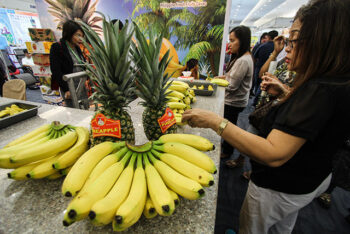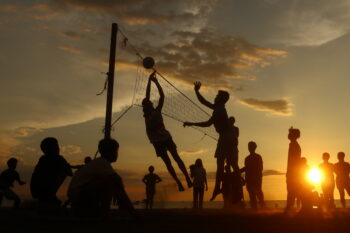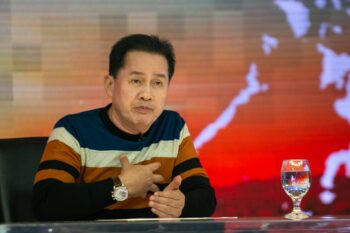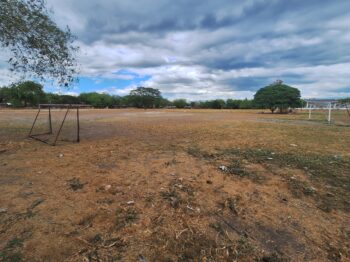ILIGAN CITY (MindaNews / 01 August) — As far as I know, only two major studies have been made so far that are specially focused on the settlement of conflict among the Lumad communities.
The first was done by Dr. Stuart A. Schlegel. His book, Tiruray Justice, came out in 1970.
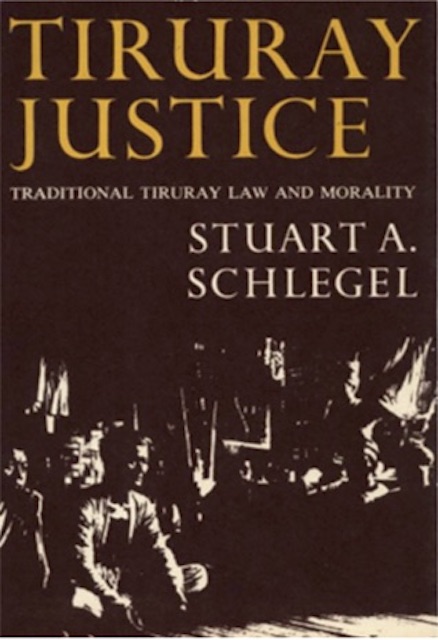 The next is called The concept of Justice Among the Indigenous Communities of Northeastern Mindanao (Mamanua, Manobo and Talaandig), commissioned by the Department of Local Government and inspired by the introduction of barangay justice, to help them get a deeper understanding of how barangay justice may be implemented in the rural areas. This was accomplished by Dr. Erlinda Montillo – Burton and Ma. Easterluna S. Canoy of Research Institute for Mindanao Culture, based at Xavier University in Cagayan de Oro City, in March 1991.
The next is called The concept of Justice Among the Indigenous Communities of Northeastern Mindanao (Mamanua, Manobo and Talaandig), commissioned by the Department of Local Government and inspired by the introduction of barangay justice, to help them get a deeper understanding of how barangay justice may be implemented in the rural areas. This was accomplished by Dr. Erlinda Montillo – Burton and Ma. Easterluna S. Canoy of Research Institute for Mindanao Culture, based at Xavier University in Cagayan de Oro City, in March 1991.
A third may be cited, undertaken by Rudy B. Rodil in May 1996. His output, Danlag Ancestal Domain Claim of the Bla-ans of Danlag, Tampakan, South Cotabato, has a full chapter on dyandi.
Another remarkable opus, the Manuvu Social Organization of E. Arsenio Manuel (1973) carries numerous data on how conflict is resolved among the Manuvu, east and north of Mt. Apo.
Other comprehensive anthropological works usually have data on conflict resolution.
Put together, these materials can give us a rather concrete feel of how the different Lumad communities resolve their conflicts.
Step back in history; Lumad not equipped to face bigger conflicts
It is important to recognize that the Lumad communities were generally ill-equipped to handle the impositions of government and the flood of settlers and big business. And this situation, in many ways, facilitated their own marginalization. Although they had customary laws on how to handle trespassing by outsiders and other minor intrusions into their territory, what happened since the arrival of the Spaniards, and the Americans, taken over by the Republic of the Philippines, in the 20th century was an intrusion and trespassing which they could only view helplessly.
For many years, they had to contend with laws and impositions which made it difficult for them to live in peace. Marginalization was not only a process of being outnumbered, it was also experiencing on a daily basis the rapid erosion of their own territory, their culture and identity before their very eyes. They have lost control of their own lives. Almost.
In a way, the passage of the Indigenous Peoples Rights Act (IPRA) represents one major effort on the part of the Indigenous Peoples (IP) to survive, to recover their lost dignity. Now that they have it, how do they get it implemented in the face of a majority culture that is not exactly sympathetic to IP values?
This project of dialogue-oriented organizations like Silsilah is a substantial effort to facilitate the deeper understanding of Lumad culture and institutions among the majority population. There are actually many points of universal value that we can learn from Lumad practice of conflict resolution.
In my experience, to understand Lumad conflict resolution, there is no need for us to read through all the works cited above and all other anthropological literature about them.
Teduray Adat
Admitting a mistake in his first book, Tiruray Justice, Dr. Schlegel corrected himself in his latest book, Wisdom from A Rainforest, published in 1999. He said unequivocably that the people call themselves Teduray and that is the way they should be called.
Some fundamental Teduray Values in their adat or customs is obtained from the first book:
- The cardinal rule of (Teduray) human relations is “do not make anyone angry at you.” Their children are taught “not to antagonize anyone or there will be trouble.” (p.21)
- “Respect for others is the Teduray’s most basic moral obligation.” (p. 31)
- “Respect for each individual’s feelings is the overriding goal of the adat” or customs. (p. 32)
- “There are three main things to respect: a person’s belongings, his standing, and his feelings.” (p. 35) Thus, if one takes another person’s belonging without asking, he does not respect the person. He lowers the person’s standing. He will surely be angry. (p. 36)
- A man’s standing represents his social position, including his “relative age and authority, his relative dignity and honor, his social esteem.” A person’s standing is his “good name” and “his right to it.” (p. 37)
- A person whose actions have caused a bad fedew (a bad gallbladder) is dufan. “By definition and by the whole logic of Teduray morality, dufan is serious and dangerous… certain to upset normal social relations, and it is very possible to incur violence, bloody turmoil for oneself and for society.” (p. 43)
- The kefeduwan is the legal and moral authority among the Teduray. It is his job to settle conflicts. He conducts his work in a tiyawan, the formal setting in which agreements are negotiated or disputes are resolved.(p. 58)
- While kefeduwans represent their respective parties in a conflict, they do not behave like lawyers trying to win their respective cases. What kefeduwans do is to collectively reach the desired situation, the fiyo fedew, where “all faults are properly accepted and rights properly respected – which to the Teduray is justice because it restores a situation where all fedew are good.” Incidentally, it is desirable for a kefeduwan to take part in a tiyawan where he is “equally related to both parties.” (p. 61-62)
- Teduray “moral behavior is aimed at the maintenance, preservation and restoration of good fedew; these tiyawan, once the moral status quo had been disturbed, had the same goals precisely.” (p. 118)
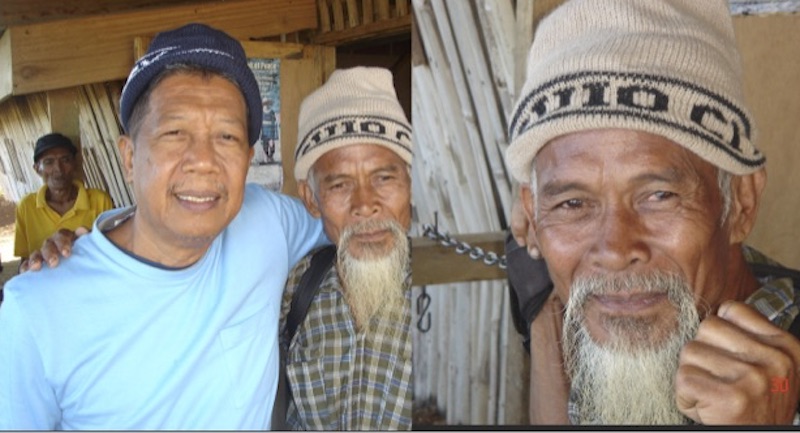
Reflections on the Government Justice System
The judicial system being implemented by government is a transplant, largely from western legal institutions developed in an entirely different social milieu and is therefore alien to our Philippine culture. Little surprise that when a judge has done his work and has passed what he deems to be an appropriate judgment, the litigants go home still dissatisfied; one party is the winner and the other party the loser. For all practical purposes, they are still enemies. Or, at least, not friends. While lawyers have taken an oath to uphold the truth, their behavior0 throughout the judicial proceedings is partial to their respective clients. Their orientation is to win against the other.
Customary Laws in the Justice System
It took the greater part of the 20th century before the government made the Code of Muslim Personal laws as part of the legal system of the Philippines. At about the same time, one, and only one school of law in the Philippines started the teaching of customary laws as one of its subjects. It was almost the end of the century before IPRA made customary law as part of the law of the land.
Looking Ahead
Developments in the first 75 years of the 20th century led to the marginalization of the Lumad and other indigenous peoples of the country. Events in the last twenty five years of the same century, however, represented a period of awakening. The Moro National Liberation Front led the Bangsamoro armed struggle for liberation, which shook the foundations of the Republic. The Lumad communities launched their own struggle for self-determination or the assertion of their right to run their own lives in their respective areas of ancestral domains in accordance with their customary laws. Many people from among the majority population took up the cause of these minority groups. In Mindanao, the tri-people approach to peace and development was born, upholding equality of rights based on dignity, not on number. Barangay justice was introduced by government in an attempt to add humanity to the judicial system. Or make it more Filipino.
In effect, this brought the judicial system closer to the culture of the people. Or near enough to how they do it among the Lumad communities where harmony is the desired value above all.
We close with this latest development, the ratification of the Bangsamoro Autonomous Region in Muslim Mindanao (BARMM) through the 2020 plebiscite. Four items that should be cited here, that will definitely touch the tribes of the Teduray, Lambagian and the Dulangan:
Sec. 3. Indigenous Peoples’ Rights. – The Bangsamoro Government recognizes the protection of the following rights: a) native titles or fusaka inged; b) Indigenous customs and traditions; c) Justice systems and indigenous political structures;; d) Equitable share in revenues from the utilization of resources in their ancestral lands.
(MindaViews is the opinion section of MindaNews. A peace specialist, Rudy Buhay Rodil is an active Mindanao historian and peace advocate. In 1988 he was a commissioner of the Regional Consultative Commission in Muslim Mindanao which helped Congress draft the Organic Act for the Autonomous Region in Muslim Mindanao. As an acknowledged expert on the history of the Moro conflict, he was twice member of the GRP peace negotiating panel in the talks with the Moro National Liberation Front, 1993 to 1996, and also vice chair of the GRP Panel in the talks with the Moro Islamic Liberation Front from 2004 to 2008. He was Visiting Professor at Hiroshima University in 2011. Having started his studies on Mindanao, especially on the Moro and Lumad affairs, in the summer of 1973, he has so far written five books, several monographs and 127 articles. As educator, he has taught in Sulu, Cotabato, Davao, Manila and Iligan. Now retired, he was Professor of History at the Mindanao State University-Iligan Institute of Technology from June 1983 to October 2007. As peace advocate, he has so far participated as resource person in more than 788 forums, seminars and conferences related to the creation of a culture of peace in Mindanao, both in the Philippines and abroad)

